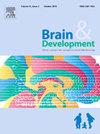Safety and feasibility of allogeneic sibling cord blood infusion in Japanese children with cerebral palsy: A single-center pilot study
IF 1.3
4区 医学
Q4 CLINICAL NEUROLOGY
引用次数: 0
Abstract
Introduction
Cerebral palsy (CP) is the most common motor disorder in childhood that causes lifelong disabilities. Studies suggest that administration of autologous cord blood (CB) or sibling cord blood (SCB) may improve gross motor function and brain connectivity in CP. In this pilot study, we evaluated the safety and efficacy of allogeneic SCB in Japanese children with CP.
Methods
A single-arm pilot study of a single intravenous dose of HLA-matched or partially matched (at least 4/6 HLA molecular matches) SCB was conducted in five Japanese patients with CP (5.0–6.3 years old). The primary endpoint was to measure the safety profiles and assessment of motor function and neurodevelopmental behaviors as the secondary endpoint.
Results
No serious side effects or concerning infusion reactions were observed. All patients showed a mean improvement of 4.89 ± 4.01 points in Gross Motor Function Measure-66 (GMFM-66) score at 6 months, which was better than predicted by age and severity of disease. In addition, GMFM-66 scores at 1 and 2 years was further improved by a mean of 6.49 ± 3.58 and 7.93 ± 4.26 points, respectively. One case showed improvement in the Developmental Quotient (DQ) overall and language/social scales and another case showed improvement in the Wechsler Intelligence Scale for Children, Fourth Edition (WISC-IV) overall, language. No significant correlations were found between GMFM-66 scores, DQ scales, WISC-IV scores and HLA concordance or number of cells administered.
Conclusion
Allogeneic SCB administration is safe and feasible in Japanese CP patients and may offer therapeutic potential in clinical practice. Future study is needed to clarify several unclear issues.
日本脑瘫患儿同种异体兄弟姐妹脐带血输注的安全性和可行性:一项单中心试点研究
脑瘫(CP)是儿童时期最常见的运动障碍,可导致终身残疾。研究表明,自体脐带血(CB)或兄弟姐妹脐带血(SCB)可以改善CP患者的大运动功能和大脑连通性。在这项初步研究中,我们评估了日本CP儿童异基因SCB的安全性和有效性。方法:在5名日本CP患者(5.0-6.3岁)中进行了单次静脉注射HLA匹配或部分匹配(至少4/6 HLA分子匹配)SCB的单臂初步研究。主要终点是测量安全性概况和评估运动功能和神经发育行为作为次要终点。结果:本品未见严重毒副作用及相关输液反应。6个月时,所有患者的大运动功能测量-66 (GMFM-66)评分平均改善4.89±4.01分,优于年龄和疾病严重程度的预测。此外,1年和2年的GMFM-66评分进一步提高,平均分别为6.49±3.58分和7.93±4.26分。1例患儿的总体发展商(DQ)和语言/社会量表均有改善,另1例患儿的韦氏儿童智力量表(WISC-IV)的总体发展商(DQ)和语言量表有改善。GMFM-66评分、DQ量表、WISC-IV评分与HLA一致性或给药细胞数之间无显著相关性。结论:同种异体SCB治疗日本CP患者安全可行,具有临床应用潜力。未来的研究需要澄清几个不明确的问题。
本文章由计算机程序翻译,如有差异,请以英文原文为准。
求助全文
约1分钟内获得全文
求助全文
来源期刊

Brain & Development
医学-临床神经学
CiteScore
3.60
自引率
0.00%
发文量
153
审稿时长
50 days
期刊介绍:
Brain and Development (ISSN 0387-7604) is the Official Journal of the Japanese Society of Child Neurology, and is aimed to promote clinical child neurology and developmental neuroscience.
The journal is devoted to publishing Review Articles, Full Length Original Papers, Case Reports and Letters to the Editor in the field of Child Neurology and related sciences. Proceedings of meetings, and professional announcements will be published at the Editor''s discretion. Letters concerning articles published in Brain and Development and other relevant issues are also welcome.
 求助内容:
求助内容: 应助结果提醒方式:
应助结果提醒方式:


